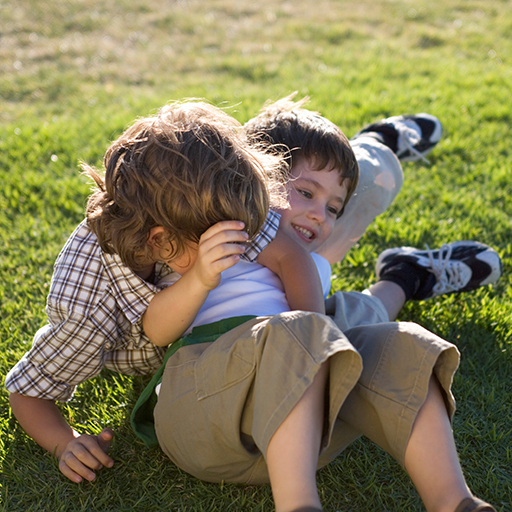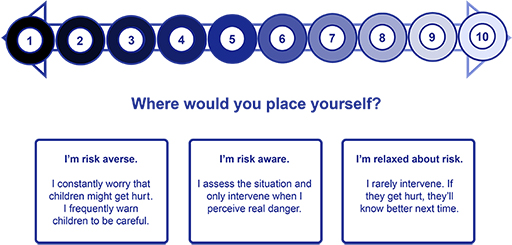5 Rough and tumble play
Young babies enjoy being rocked, softly tickled and caressed by a familiar adult. As they grow, many toddlers and young children (but not all) enjoy the physical play often known as ‘rough and tumble’.
This refers to the type of physical play that involves tickling, play wrestling, chasing, catching, falling on purpose and lifting and swinging each other or rolling on the ground, for example. Rough and tumble play involves high levels of physical exertion and opportunity to develop motor skills.

When familiar, sensitive adults engage in rough and tumble with children, they can usually ‘read’ their body language and adapt the play in response. Parents and practitioners are sometimes concerned that rough and tumble play between children resembles aggression, and consequently they may intervene to stop, or limit the play. However, when observing children’s play, there are clear distinctions between what is play and what is aggression.
| Characteristics of rough and tumble play | Characteristics of aggression |
|---|---|
| All participants are smiling and laughing | Signs of upset, distress or anger |
| All participants take part equally | One child attempts to dominate |
| Child chooses to stay in the play situation | Child tries to remove themselves from the play |
In a research study of children’s rough and tumble play, Jarvis (2007) found that despite the appearance of ‘fighting’, the play involved:
- peer support
- building social relationships
- negotiation of rules
- fair play and collaboration.
Of course, rough and tumble play between young children must be supervised by adults who promote overarching rules of respecting and taking care of each other. However, with clear boundaries in place, this type of play can support children’s health, wellbeing and holistic development.
-
Think about your own style of parenting or your approach to early years practice in relation to children’s physical play. Where would you place yourself on the continuum below?
It is important to think about your own responses and reactions to risk and the sorts of messages your words and actions convey to young children. If you constantly tell children to be careful, that they might fall or they might get hurt, you can create anxiety about physical play.
Where appropriate, you need to help children assess and manage risk, rather than stopping the play. Risky play and rough and tumble play can be viewed as opportunities to promote core values of respect, empathy and taking care of one another.

